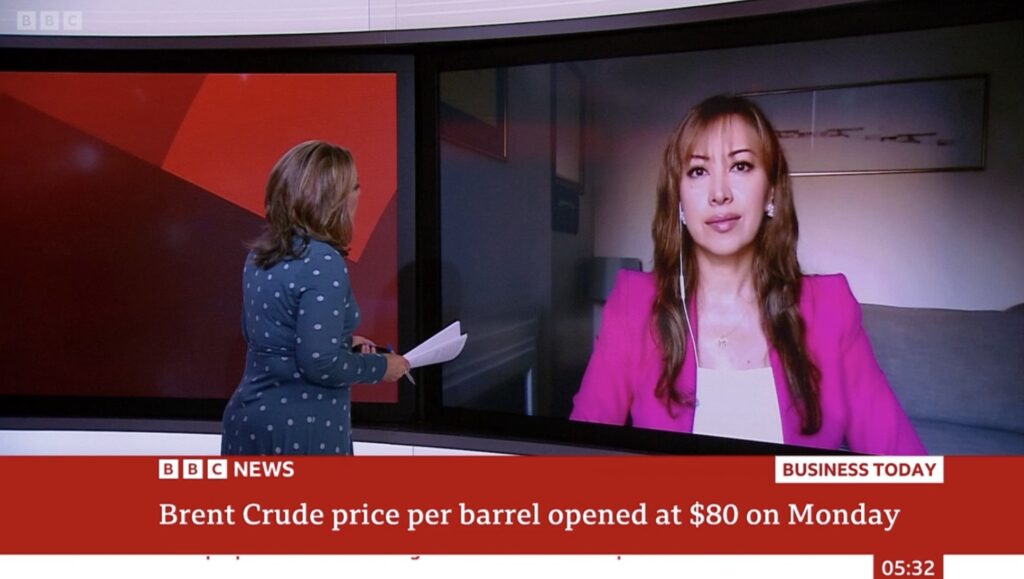Dr Carole Nakhle
The energy transition to a low-carbon world is mining-intensive and vulnerable to resource nationalism. To achieve net-zero emissions by 2050, the pivot toward curbing greenhouse gases will spur unprecedented demand for some of the most critical materials used in renewable energy generation and storage. From solar panels to wind turbines, battery storage, electric vehicles and electricity cables, green technologies and infrastructure all rely heavily on different sets of minerals and metals. To keep global warming under 2 degrees Celsius, graphite, lithium and cobalt production will need to rise more than 450 percent by 2050 from 2018 levels – and that is just to meet demand from energy storage technologies.
By 2030, at least 300 new mines – for materials like cobalt, copper, graphite, lithium, nickel, rare earth elements (RREs) and vanadium – will need to be brought onstream. That is no easy task, especially given the time lag between committing the capital, developing the mine and starting production (if commercial discoveries have been made), which can easily span 10 years or longer.
Concerns about potential supply shortages have begun to emerge. One study warned of a chronic gap between worldwide copper supply and demand that could open up by the middle of this decade, causing severe consequences across the global economy and adverse effects on the timing of net-zero targets.
However, most studies on the outlook for minerals and metals supplies typically assume that the status quo in the industry’s structure will remain in place and the risk of significant disruptions to that structure has been largely overlooked. When a natural resource gains greater strategic importance and its value increases accordingly, it attracts state intervention and control.
That can take different forms – from higher taxes to creating state-owned enterprises with equity participation in various projects, export controls and even nationalization. Such a rise in resource nationalism will have significant consequences on the pace and scale of investment, security of supply and prices. That will increase the cost of the energy transition notably and risk delaying it.
Projected shortfall of critical inputs
Given the massive projected increase in metals consumption through 2050 under a net-zero scenario, the International Monetary Fund (IMF) fears that current production growth rates of metals such as graphite, cobalt, vanadium and nickel are inadequate, resulting in a more than two-thirds gap versus demand. The shortfall in copper, lithium and platinum is expected to vary between 30 percent and 40 percent relative to demand. Because of the shortfall, “prices could reach historical peaks for an unprecedented length of time,” the fund warned.
Higher prices should spur more investment in the sector, and accordingly, the supply-demand gap would dissipate over time. That is true in market-based economies where the resources are available and accessible. In practice, several problems can hinder an efficient market response.
Having sufficient resources alone is not enough to determine how well production will perform. Venezuela sits on the largest proven oil reserves in the world but only ranks 25 in production. That has been due to the lack of investment following years of adverse government policies, then sanctions imposed in more recent years.
Before committing their capital, investors consider a combination of factors, especially when it comes to capital-intensive projects that require significant upfront financing, entail geological risk and have a long payback period. These features are typical of extractive industries like mining, oil and gas. Resource availability is only one factor that goes into assessing how attractive an investment is. Other essential variables include costs and infrastructure availability, as well as license and contractual terms. The fiscal regime and political risk are especially important.
Concentration in mining spells trouble
The high concentration of mineral reserves and production in a few locations raises concerns among importing nations. A paper published by the British government defines the critical threshold for production concentration as three producers accounting for 70 percent of global production. The top three producing countries in oil and gas represent 43 and 46 percent of world’s oil and gas supply, respectively. In contrast, in the case of lithium, cobalt and REEs, the world’s top three producing nations control more than three-quarters of global output. The Democratic Republic of the Congo and China account for 70 percent and 60 percent of global production of cobalt and RREs, respectively (2019 data).
The paper concludes that the risk of anticompetitive behavior designed to restrict the international supply of a natural resource is, therefore, higher for some metals and minerals than resources such as oil and gas.
Similarly, the International Energy Agency (IEA) warns that high concentration levels increase the risks that could arise from physical disruption, trade restrictions or other developments in major producing countries. Furthermore, according to the Austrian Federal Ministry of Agriculture, Regions and Tourism, most producing countries are politically unstable, which increases the risk and cost of doing business. Also, the governance of natural resources in many of these places is “suboptimal,” as the International Council on Mining and Metals (ICMM) put it. Producing countries’ political and economic stability, which affects the supply risk, is one key factor in classifying of what constitutes a “critical mineral” – the other is its economic significance.
Additionally, for all those countries, the sector has strategic importance, especially where it is the backbone of the economy and the primary source of government revenue. Countries are considered resource-dependent when metals and minerals account for more than 20 percent of exports by value, and mineral rents are more than 10 percent of the country’s gross domestic product (GDP), according to the ICMM. In many developing countries, that threshold is easily exceeded.
Meanwhile, some have expressed concern that mining companies (especially those operating in Africa) have been granted too many tax concessions and subsidies, leading to an unfair erosion of taxable income and paving the way for fiscal terms’ upward revisions. Such a scenario becomes a reality when the industry enjoys greater profitability in a high-price environment.
High risk of resource nationalism
All the above factors – from the concentration of production and reserves to the sector’s strategic importance and particularly the potential for high prices – create fertile ground for a rise in resource nationalism. There are various measures a host state can use to increase control, capture a bigger share of the proceeds and acquire new or higher ownership in projects at the expense of foreign participation.
This phenomenon is well-known in the oil industry. It proliferated around the 1950s as oil’s strategic importance to local and global economies became more visible. Some of its manifestations include the emergence of more assertive host governments culminating with the birth of OPEC in 1960, abolishing of previously granted concessions and replacing them with new types of more restrictive contracts that limited the participation of the private sector and their ownership of production, establishing national oil companies and, in many cases, nationalizing the private sector’s assets.
The mining industry also saw a similar wave of resource nationalism, albeit with a more moderate impact. That happened during the three decades following World War II, which registered strong growth in metal production and prices. However, the trend peaked by the mid-1980s, as prices fell, and the industry’s profits declined. During the 1990s and early 2000s, the pendulum swung in the opposite direction in tandem with metals prices, which hit their lowest levels in more than 30 years. Many developing countries privatized the mining industry and opened the sector to foreign investment.
The price recovery, in particular following the financial crisis of 2008, continues to date and has created new ambitions for mineral-rich countries. “A large group of countries are in the process [of reconsidering] their mineral policies to find ways to increase the potential benefits of mineral resources to the nation,” the World Bank concluded in 2011. Those ambitions will only expand under existing trends defined by the energy transition. In April 2023, Chile’s left-wing government announced its intent to nationalize the country’s lithium industry. The risk that other resource-rich countries will follow suit is significant.
Governments acquiring a stronger presence in the sector and a larger share of the mineral rent is not alarming in itself – after all, they are the sovereign owners of the resource and should secure a fair share of the proceeds. Furthermore, although fiscal stability is a key principle of an ideal tax system, fiscal terms are not set in stone. They can be revisited if conditions change, and the initial terms offered to investors do not adequately accommodate the new circumstances.
However, there is a risk that a rise in resource nationalism can create adverse conditions for investment at a time when it is urgently needed. That is particularly true in many developing countries where the institutional framework is weak, the government lacks the administrative capacity to implement changes in an orderly manner, and the new fiscal terms are unnecessarily complex, distortionary and fail to target the rent. In such a climate, the state-owned enterprises become a breeding ground for corruption.
The timely success of the energy transition will largely depend on those countries getting the balance right. In a 2017 report, the World Bank stated the obvious, saying that “a low-carbon future will not be possible without minerals.” Without investment and supportive policies for such investment, those minerals will surely be in critical supply.
Facts & Figures
- The 2 degrees Celsius warming scenario was initially proposed in the 1990s as an upper limit that would avert the worst consequences of climate change.
- In the last 5,000 years, about 550 million tons of copper have been produced; in the next 25 years, the world will need the same amount to meet demand (World Bank).
- A typical electric car needs six times the mineral inputs of a conventional car; an onshore wind plant requires nine times more mineral resources than a gas-fired plant (International Energy Agency).
- In 2019, minerals and fossil fuels accounted for over a third of exports from at least 60 percent of African countries (policycenter.ma).
- About 3,000 solar panels are needed for every 1-megawatt (MW) of capacity within a solar photovoltaic (PV) system. This means that a 200 MW solar PV project could be as big as 550 American football fields (World Bank).
- The mining industry uses 6.2% of the total global energy consumption. (Aggreko, “The Energy Transition Addressing the Challenge in Mining.”)
- The clean energy transition needed to avoid the worst effects of climate change could unleash unprecedented metals demand in the coming decades, requiring as much as 3 billion tons (IMF).
- 10 of the world’s 15 most mining-intensive economies are in sub-Saharan Africa (IMF).
- China is the world’s largest producer of 31 different commodities (World Mining Data, 2022)
Related Analysis
“AI and the global energy transition“, Dr Carole Nakhle, Nov 2022
“Technology breakthroughs 2022: Energy storage“, Dr Carole Nakhle, Jan 2022
“Time for realism in the climate battle“, Lord David Howell, Feb 2021
“Masdar – energy transition in action“, Dr Carole Nakhle, Sep 2021
“Trying to grasp the geopolitics of the energy transition“, Dr Carole Nakhle, Sep 2021
“The energy transition: Some inconvenient truths“, Dr Carole Nakhle, Jun 2021








